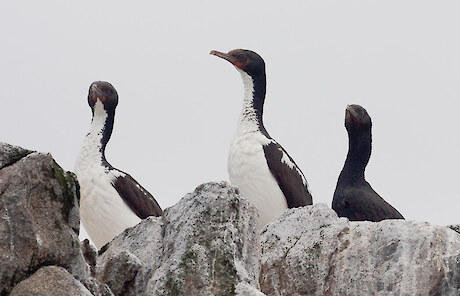The Aluminium Smelter at Tiwai Point has been in operation since 1971. In the 1960s, Tiwai Point was chosen as the location for an aluminium smelter. Aluminium smelting requires a large and very reliable power source to continually supply electricity to reduction cells, and Tiwai Point’s proximity to the then proposed Manapouri Power Station made it an attractive location. In addition, Tiwai Point was close to the deep sea port of Bluff and a large pool of potential employees based in Invercargill.
There was little controversy around the siting of Tiwai Smelter at the time of construction from an environmental perspective. At that time the area was within the jurisdiction of the Southland County Council and the relevant planning legislation was the 1953 Town and Country Planning Act. It’s important to note that the aluminium smelter had been in operation for 20 years before New Zealand’s Resource Management Act (RMA) was passed in 1991.
The Tiwai Aluminium Smelter is located at Tiwai Point on the Tiwai Peninsula. Despite the location of a large industrial site, Tiwai Point lies adjacent to the internationally recognised Awarua wetland complex. In February 2008, New Zealand’s Department of Conservation was notified by the Ramsar Secretariat of its decision to approve an application to extend the Waituna Ramsar site from around 3,500 ha to around 20,000ha and to rename it the Awarua Wetland. Foveaux shag. Photo: Wikipedia
Foveaux shag. Photo: Wikipedia
The Awarua Wetland Ramsar site is now the largest protected wetland complex in New Zealand. The extension includes not only Waituna but also the Awarua Plains, the New River Estuary, Toetoes Harbour and Spit and the northern edge of the Tiwai Peninsula. The 2000 hectares of land surrounding NZAS is part of New Zealand’s Conservation Estate managed by the Department of Conservation. NZAS leases the Tiwai Peninsula from the Department of Conservation, part of which falls into the Awarua Wetland Ramsar site. Find out more about the Awarua Wetland and the rare and threatened birds, fish, lizards, invertebrates and plant communities that call it home.
Download the report
Preliminary Environmental Report - Tiwai - January 2021 (PDF, 11.41 MB)
[1] https://www.nzas.co.nz/pages/access-permit-to-tiwai-peninsula/
